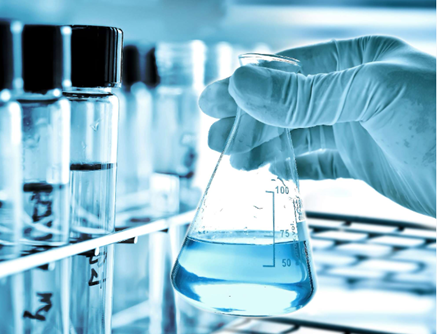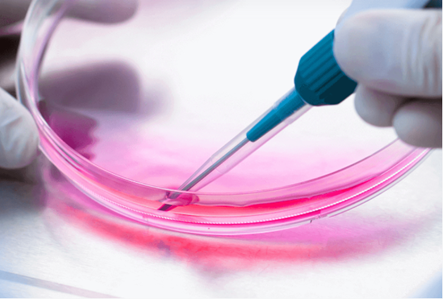Inductively Coupled Plasma Tandem Mass Spectrometry (ICP-MS/MS) measures elements at trace and ultra-trace levels even in complex matrices like plasma, CSF, and tissue digests. Its performance comes from a carefully engineered pathway that turns droplets into ions, strips away interferences, and counts target isotopes with extraordinary dynamic range.
Understanding that pathway helps you design better methods, troubleshoot quickly, and choose options that fit bioanalysis and DMPK needs. The overview below walks through each major module and how it influences data quality.

Inside an ICP-MS/MS: Components and Data Path
From liquid sample to quantified isotope, each stage shapes sensitivity, selectivity, and robustness.
Sample introduction: nebulizer and spray chamber.
Liquid samples are aerosolized by a concentric or microflow nebulizer, then conditioned in a Scott or cyclonic spray chamber. Temperature control (cooled chambers) and aerosol dilution reduce solvent load and carryover. Optional membrane desolvation boosts transport efficiency, lowers oxides/hydrides, and sharpens detection limits for challenging biofluids.
Torch and plasma generation.
An RF generator sustains an argon plasma (≈6,000–10,000 K) that dries, vaporizes, atomizes, and ionizes analytes regardless of chemical form. Tuning nebulizer, auxiliary, and coolant flows yields a “robust” plasma; oxide (CeO⁺/Ce⁺) and doubly charged (Ba²⁺/Ba⁺) ratios are standard health checks that predict interference behavior and long-run stability.

Interface and vacuum system.
Through the sampler and skimmer cones (Ni or Pt), ions exit atmospheric pressure into a high-vacuum region driven by turbomolecular and roughing pumps. Cone cleanliness and alignment are critical—salt or protein deposits throttle transmission and raise backgrounds. High-matrix options (wider orifice, hyper-skimmer) extend uptime with seawater or digests.
Ion optics and focusing.
Electrostatic lenses steer and focus the emerging ion beam while rejecting neutrals and photons. Stable lens voltages minimize noise and mass bias, improving precision at low counts. Good optics are the bridge between raw signal and true sensitivity, especially when you push sub-ppt detection.
Q1: The first mass filter.
In tandem mode, Quadrupole 1 preselects the target m/z (or narrow window) before chemistry happens. This “mass gating” keeps unwanted species out of the cell, enabling cleaner reactions and higher specificity than single-quadrupole ICP-MS.
Collision/reaction cell (CRC).
The heart of interference control. With He (kinetic-energy discrimination), polyatomics are suppressed on-mass; with reactive gases (H₂, O₂, NH₃), you convert ions and read them at new masses (mass-shift), e.g., As⁺→AsO⁺, Se⁺→SeO⁺. Optimizing gas type, flow, and band-pass balances background removal with analyte response, and is often the biggest driver of LOD.
Q2 and the detector.
Quadrupole 2 performs final mass selection and sends ions to a discrete-dynode electron multiplier. Modern systems switch automatically between pulse-counting and analog to cover ~9–10 orders of linear range. Dead-time correction, abundance sensitivity, and mass calibration routines protect data integrity across long sequences.
Control software, QA, and quantitation models.
Auto-tune templates set gas flows, lens voltages, and CRC modes per element. Internal standards (e.g., Rh, In, Ir, Bi) correct drift; isotope-dilution workflows deliver metrological accuracy when reference spikes exist. Routine metrics—background equivalent concentration (BEC), detection limits, and continuing calibration verification—keep runs inspection-ready.
Hyphenated and high-matrix options.
Autosamplers, high-matrix introduction (UHMI/aerosol dilution), and microflow nebulizers support salty waters and protein-rich digests. Coupling HPLC to icp ms ms enables speciation (separating chemical forms before detection) and is widely used in bioanalysis—for example, tracking platinum-drug species or element-tagged biomolecules in DMPK studies.
Conclusion
ICP-MS/MS performance is the sum of its parts: efficient aerosol creation, a robust plasma, clean ion extraction, precise quadrupole control, smart cell chemistry, and a fast, linear detector—knit together by validation-friendly software. Knowing what each module does and how settings interact lets you tailor methods for environmental monitoring, food testing, or bioanalysis. In DMPK programs, hyphenation and small-volume workflows turn that architecture into reliable PK, distribution, and speciation data that drive confident development decisions.
